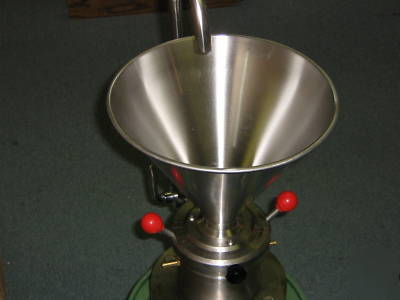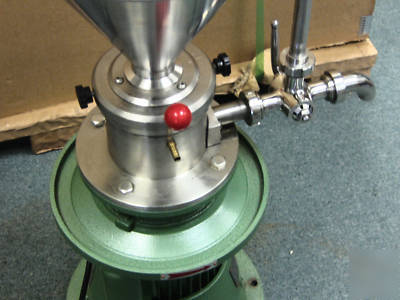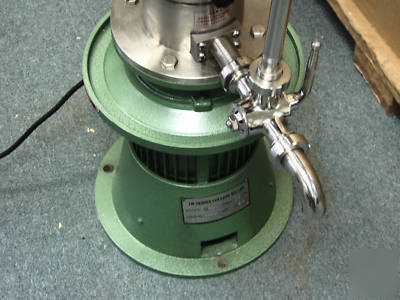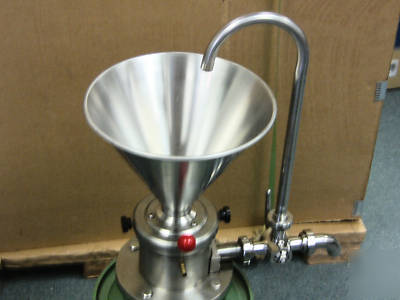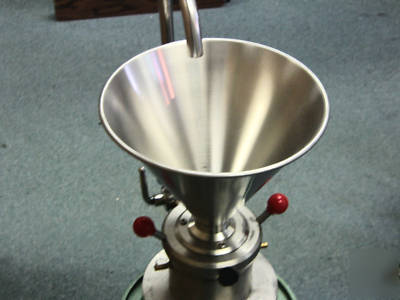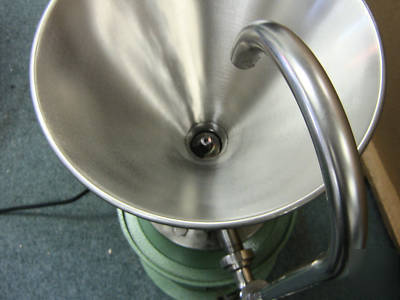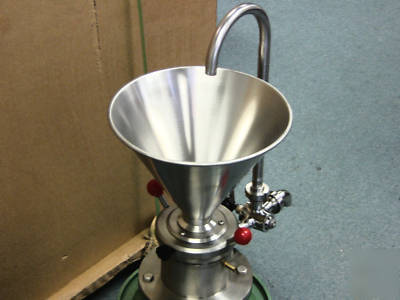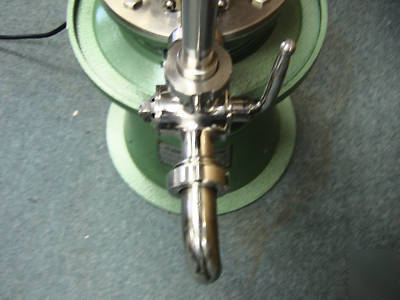Chicago Industrial Reuse and Parts Blog-Newsgroup > Downtown
> New
> Agricultural
> Plowing
> Stainlesssteel commercial food miller colloidal grinder
Stainlesssteel commercial food miller colloidal grinder
COMMERCIAL MILLER - GRINDER QUALITY FOOD GRADE STAINLESS STEEL COLLODIAL GRINDER
UNIT INCLUDES STAINLESS STEEL BOWL FOR EASY CLEANING CLEANING AND PURITY .
PROVIDING YEARS OF UNINTERRUPTIBLE USE .
UNIT WEIGHT WITH CRATE LESS THAN 140 POUNDS . CRATE 32 INCHES HEIGHT BY 15 BY 15 INCHES WIDE .
220 VOLT OUTLET REQUIRED OR SETP UP TRANSFORMER REQUIRED IF OUTLET POWER IS 110 VOLT .
GRANULE PRECISION 2 TO 50 MICRONS .
COLLODIAL GRINDER THE WORKING PRINCIPAL OF THE MILL GRINDER IS THAT UNDER CENTRIFUGAL FORCE AND HIGH SPEEDS THE ROTATING GEAR AND FIXED GEAR EMULFIFIES OR LIQUIFIES OR HOMOGENIZE OR COURSELY MIXES AND GRINDS TO DESIRED CONSISTENCY .
A colloid is a type of chemical mixture in which one substance is dispersed evenly throughout another. The particles of the dispersed substance are only suspended in the mixture, unlike in a solution, in which they are completely dissolved. This occurs because the particles in a colloid are larger than in a solution - small enough to be dispersed evenly and maintain a homogeneous appearance, but large enough to scatter light and not dissolve. Because of this dispersal, some colloids have the appearance of solutions. A colloidal system consists of two separate phases: a dispersed phase (or internal phase) and a continuous phase (or dispersion medium). A colloidal system may be solid, liquid, or gaseous.Many familiar substances are colloids. As well as these naturally occurring colloids, modern chemical process industries utilise high shear mixing technology to create novel colloids.Thus, colloid suspensions are intermediate between homogeneous and heterogeneous mixtures. They are sometimes classified as either "homogeneous" or "heterogeneous" based upon their appearance. The dispersed-phase particles have a diameter of between approximately 5 and 200 nanometers.[1] Such particles are normally invisible to an optical microscope, though their presence can be confirmed with the use of an ultramicroscope or an electron microscope. Homogeneous mixtures with a dispersed phase in this size range may be called colloidal aerosols, colloidal emulsions, colloidal foams, colloidal dispersions, or hydrosols. The dispersed-phase particles or droplets are affected largely by the surface chemistry present in the colloid. Some colloids are translucent because of the Tyndall effect, which is the scattering of light by particles in the colloid. Other colloids may be opaque or have a slight color.
